Pork fat is sold as lard and has many uses in the kitchen. From frying a quesadilla to making amazing Instant Pot Tamales, rendered pork fat adds a ton of flavor and is considered a natural fat. I'll show you how to render pork fat in this informative post!
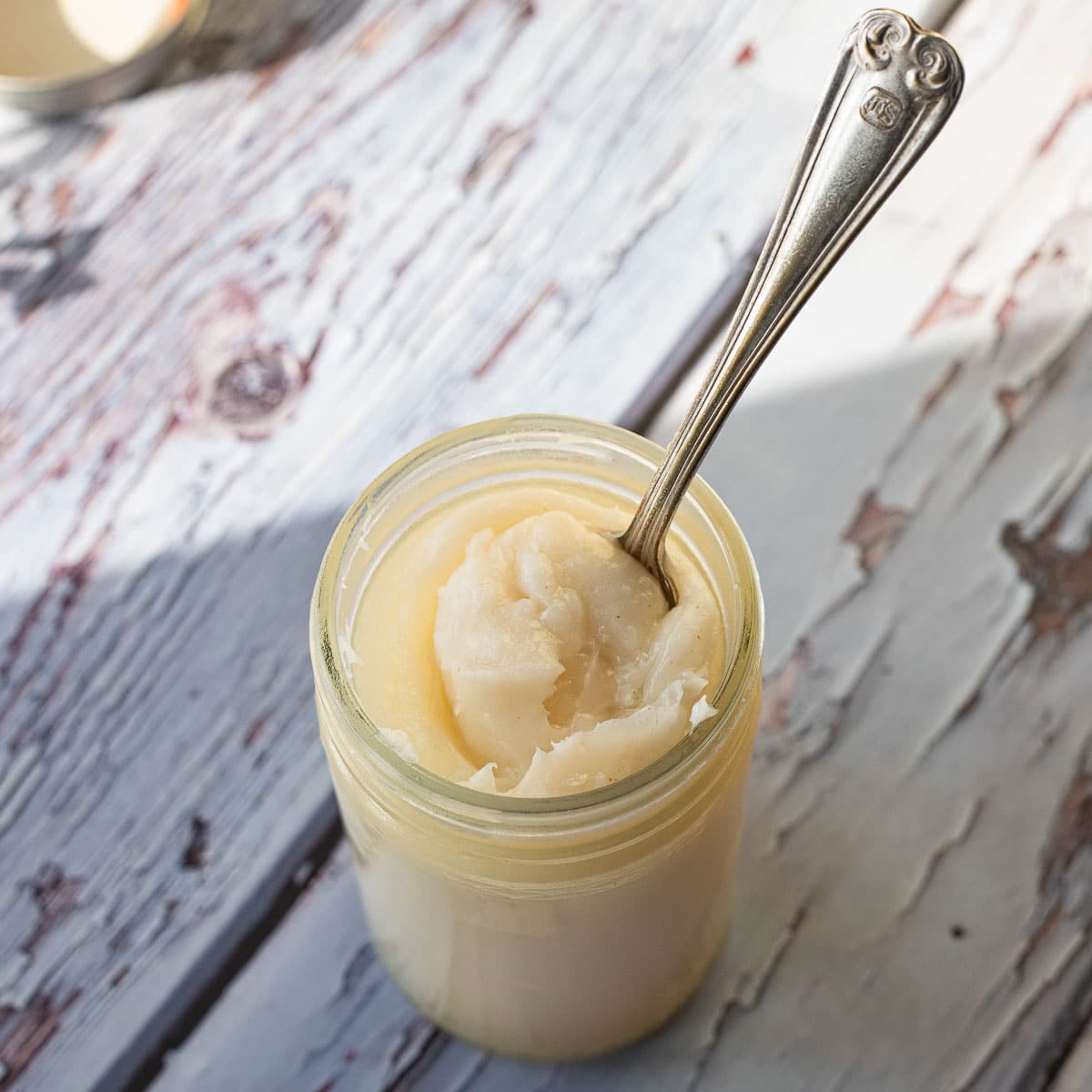
As prices continue to rise and families try to find ways to save money, going back to some of the ways our parents pinched pennies may not be a bad idea.
From making your own potato pasta to fermenting your own homemade wine and canning salsa there's so much we can be doing!
So the next time you buy a pork roast, don't toss the trimmed fat, render it to make homemade lard instead!
Jump to:
🧐 Why This Recipe Works
- Rendered pork fat is really easy to make!
- Lard adds a ton of flavor to your favorite dishes.
- Rendering your own pork fat can save you some money.
- Lard can also be used to make candles, lotions, soaps, and more!
🛒 What You Need For This Recipe
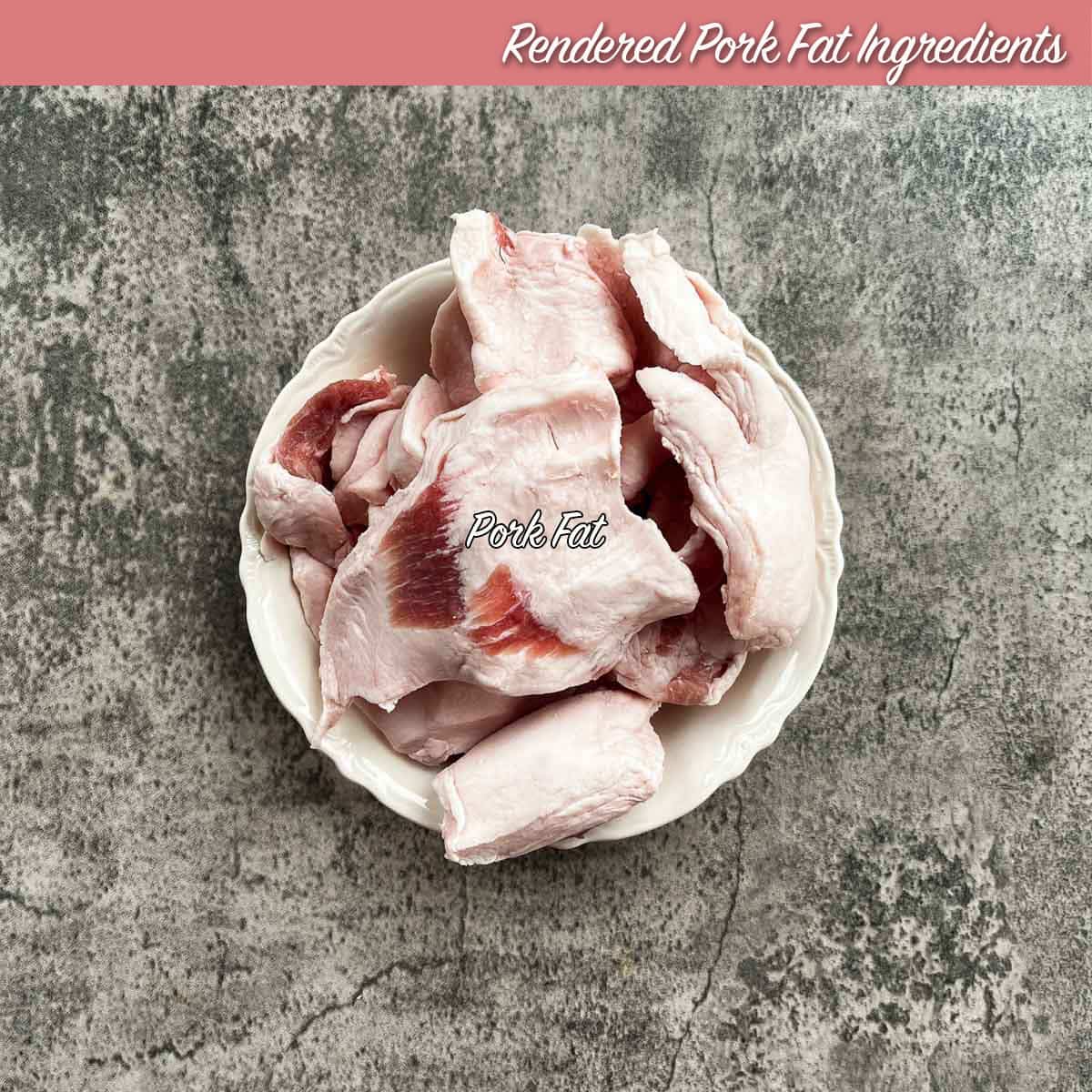
🔖 Ingredients & Substitutions
Pork fat: All you need for this recipe is pork fat. The fat can be freshly trimmed or frozen.
🍖 How to Make Lard
Step 1: Partially defrost pork fat, if frozen, then remove meat or connective tissues, before chopping into 1" pieces. Add to a medium-sized pot.
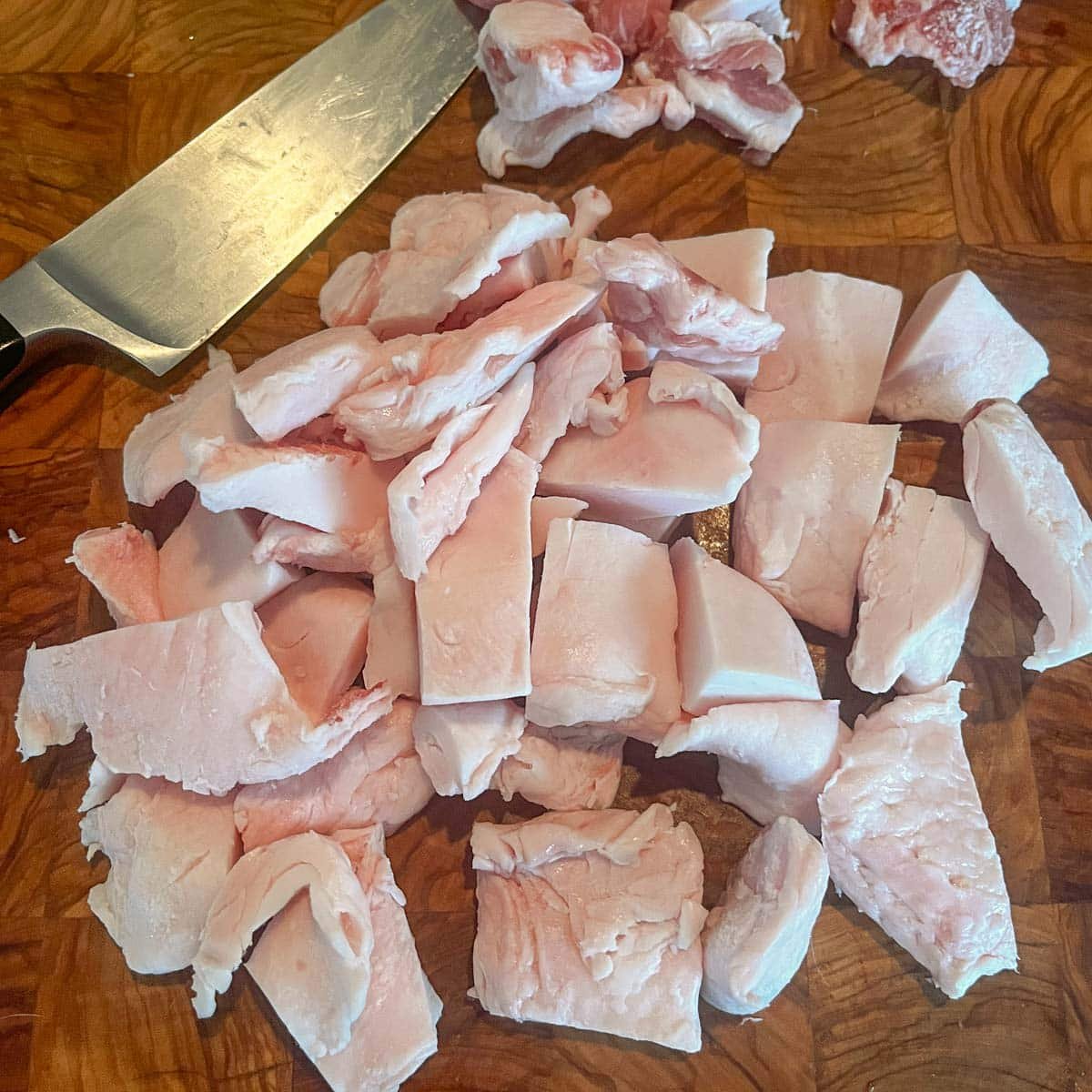

Pro Tip: Keeping the fat semi-frozen will make it easier to slice.
Step 2: Place pot over a heat diffuser, if you have one, and cook on lowest heat setting for 1 to 3 hours, or until the fat is completely rendered and the fat pieces shrink and become crispy.
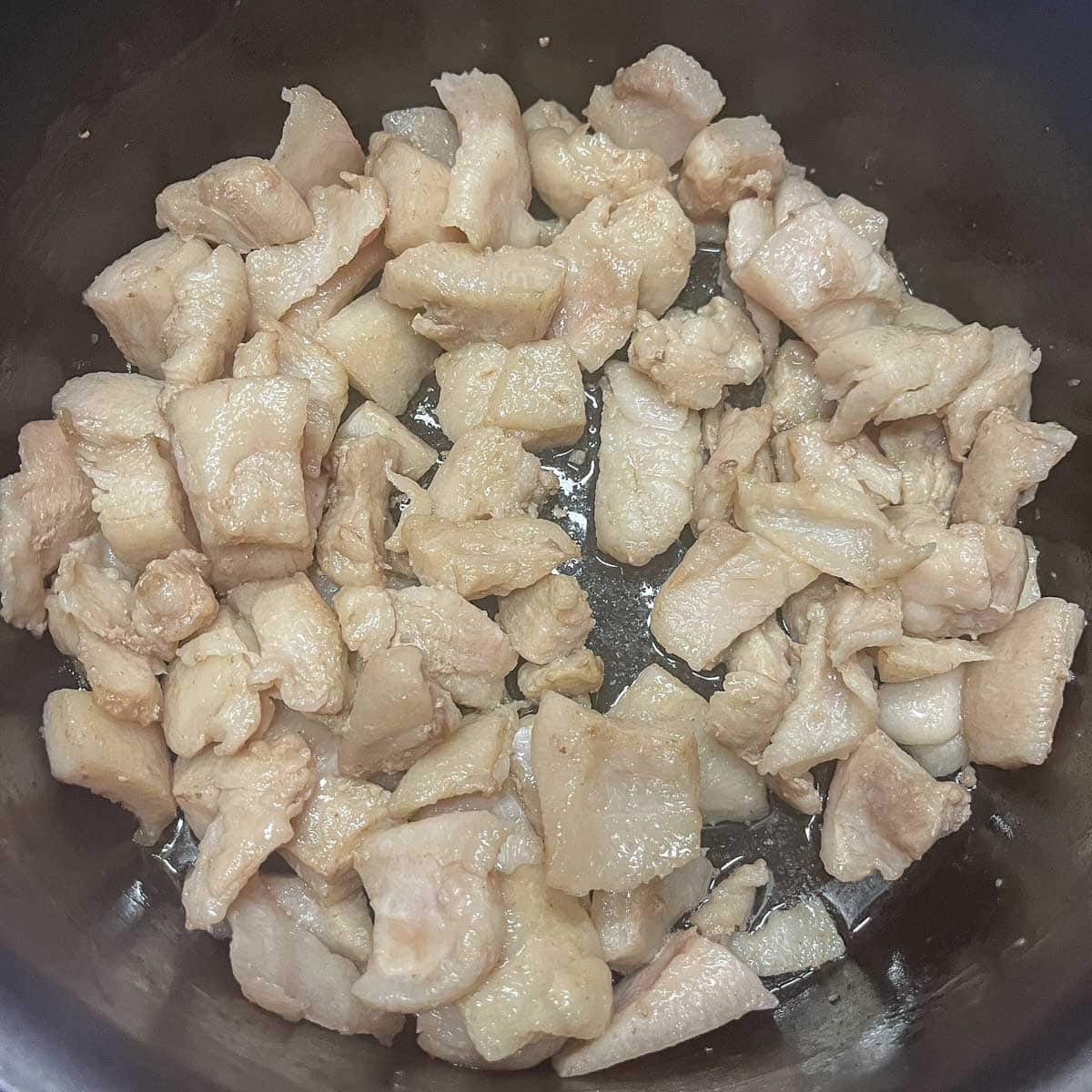
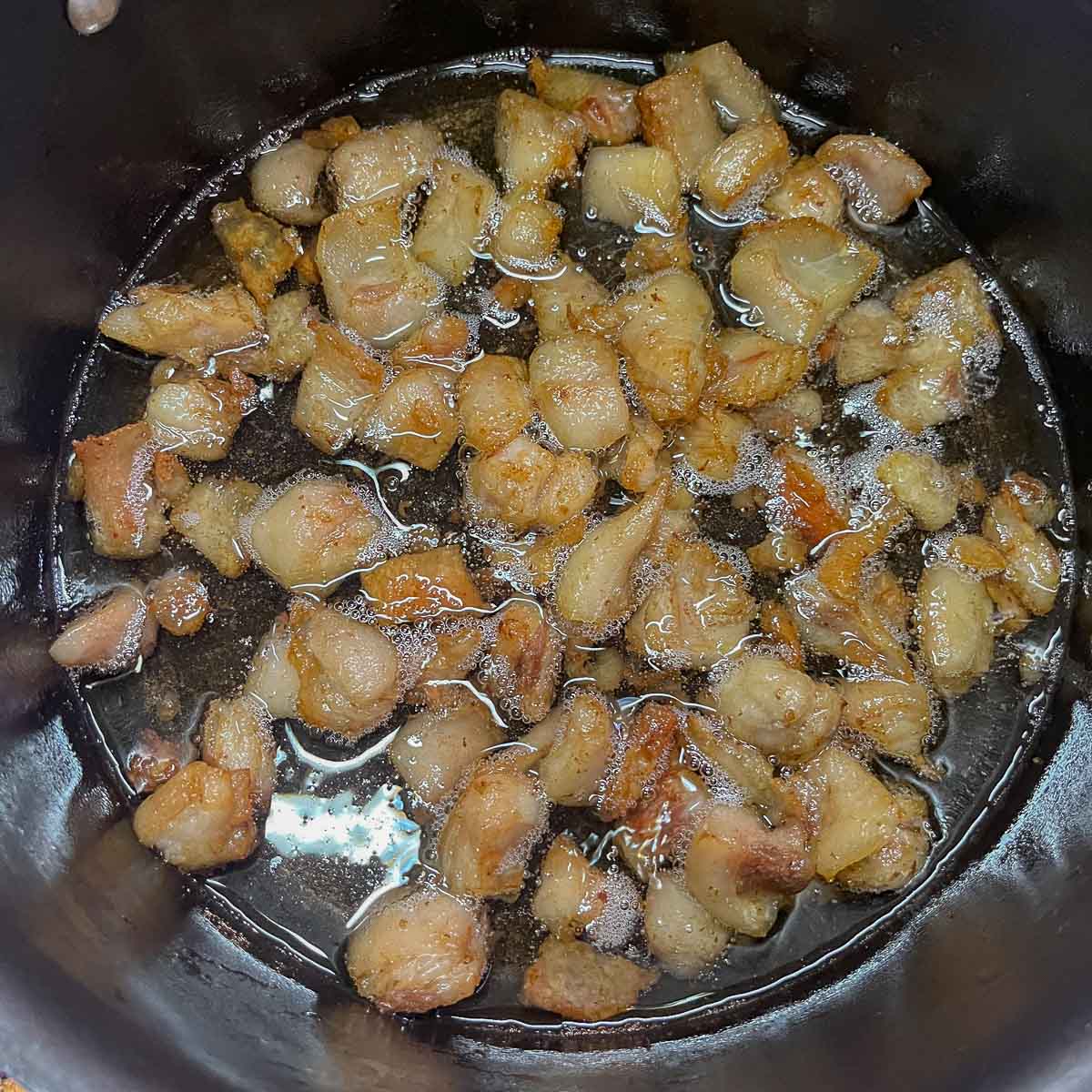
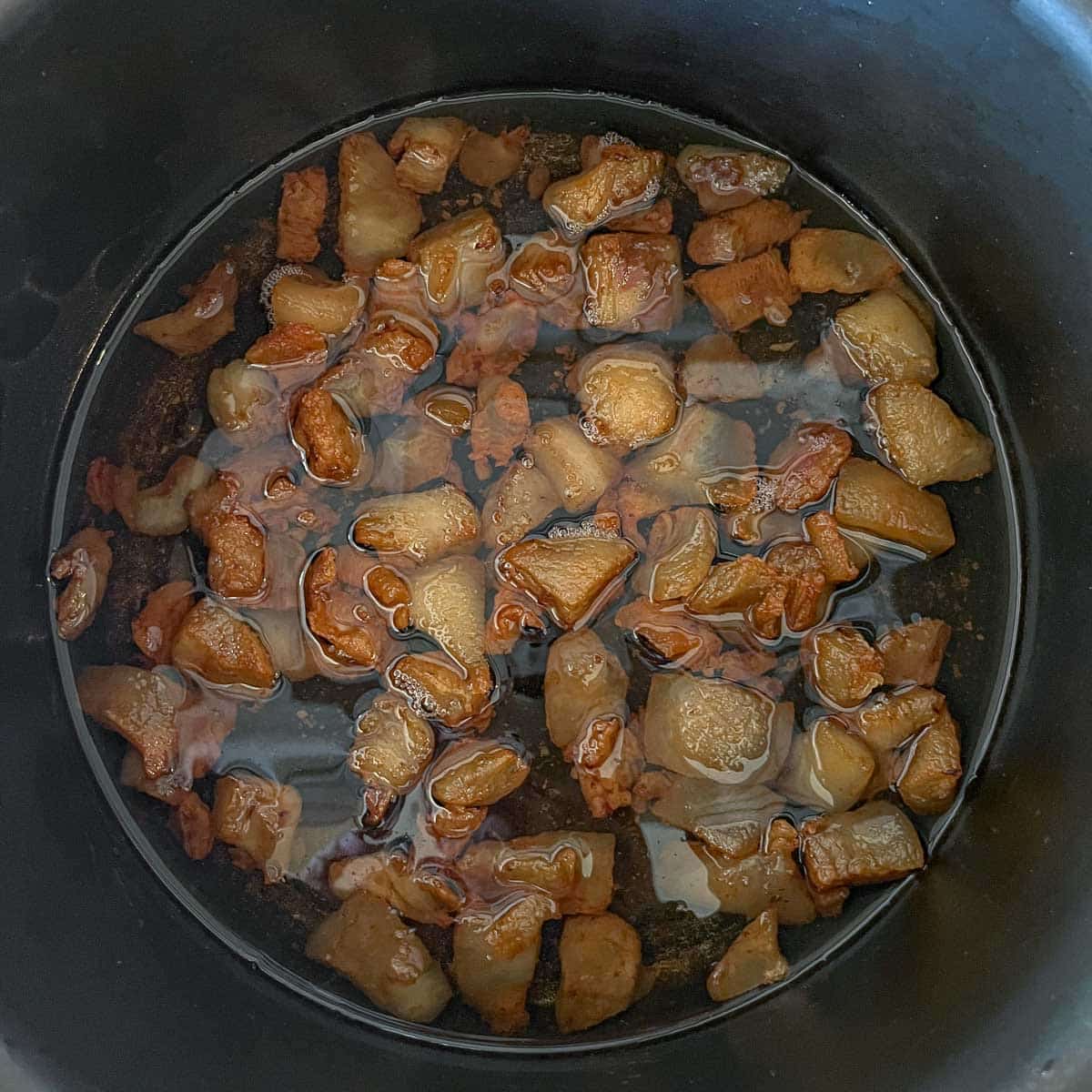
Would you like to save this recipe?
Pro Tip: The lower the heat, the less likely you are to burn the fat, and the cleaner and whiter the end result will be!
Step 3: Use a slotted spoon to remove the crispy fat pieces, then strain the fat through a fine mesh strainer and into a measuring cup or a mason jar. If you want the fat extra clear, strain it a second time through a soup bag.
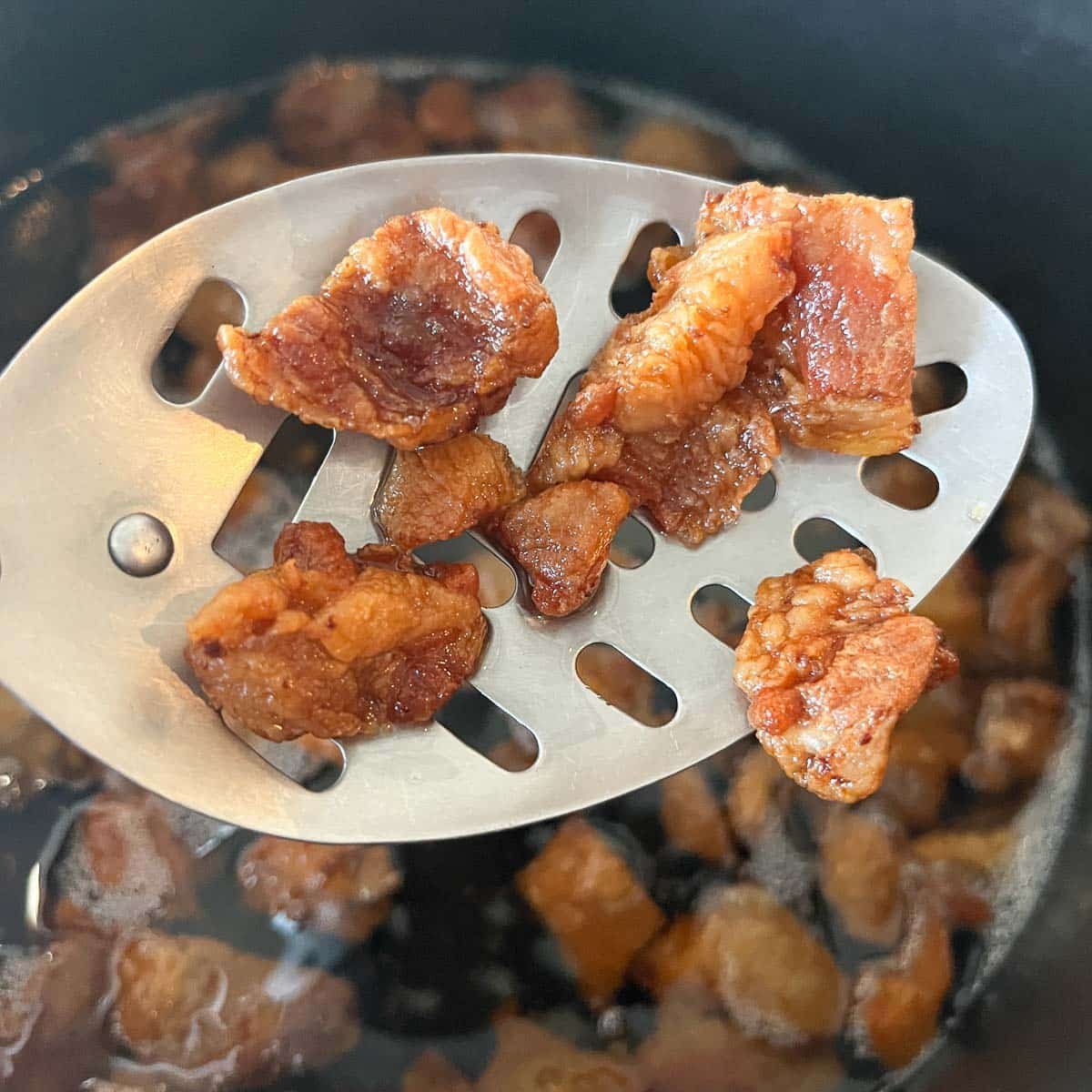

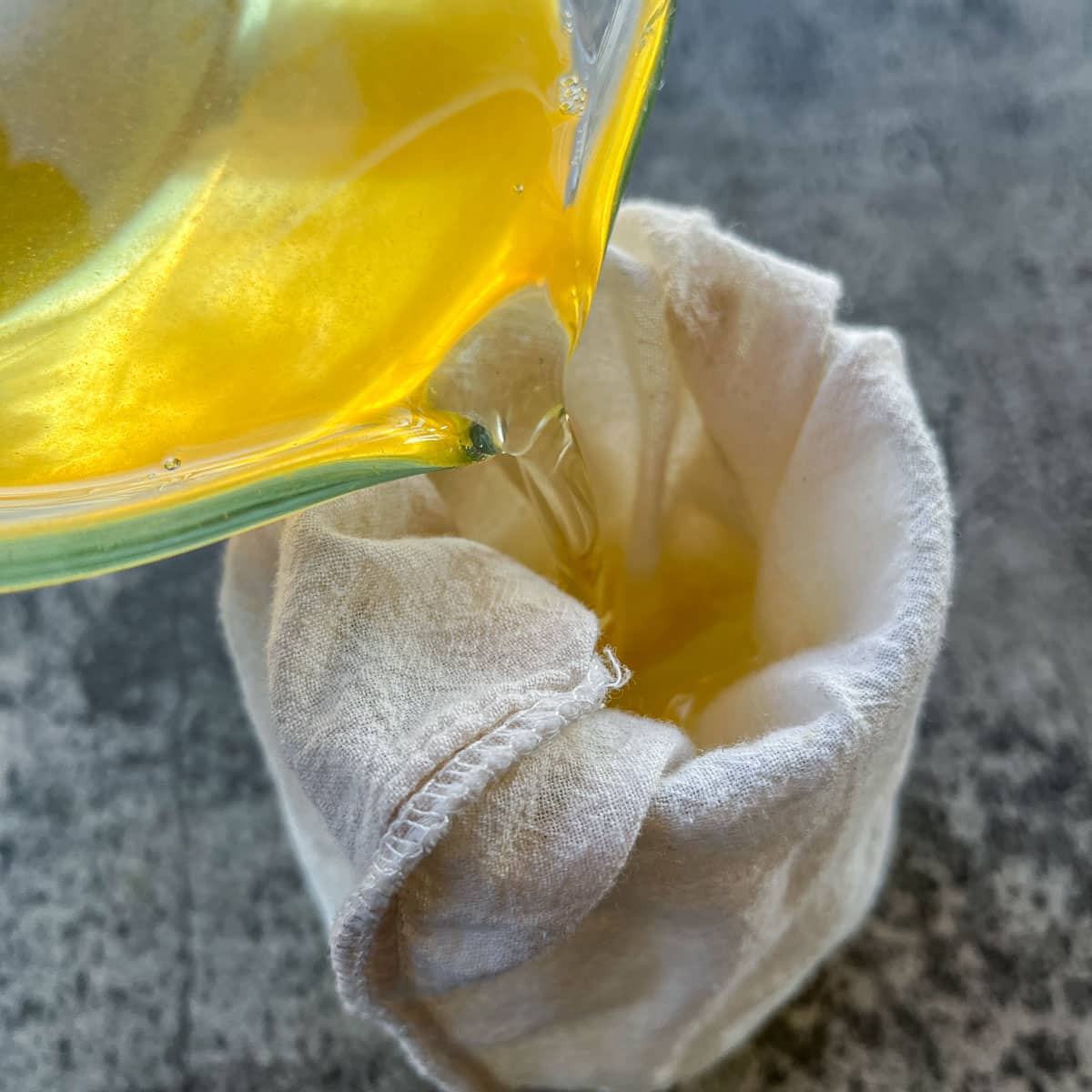
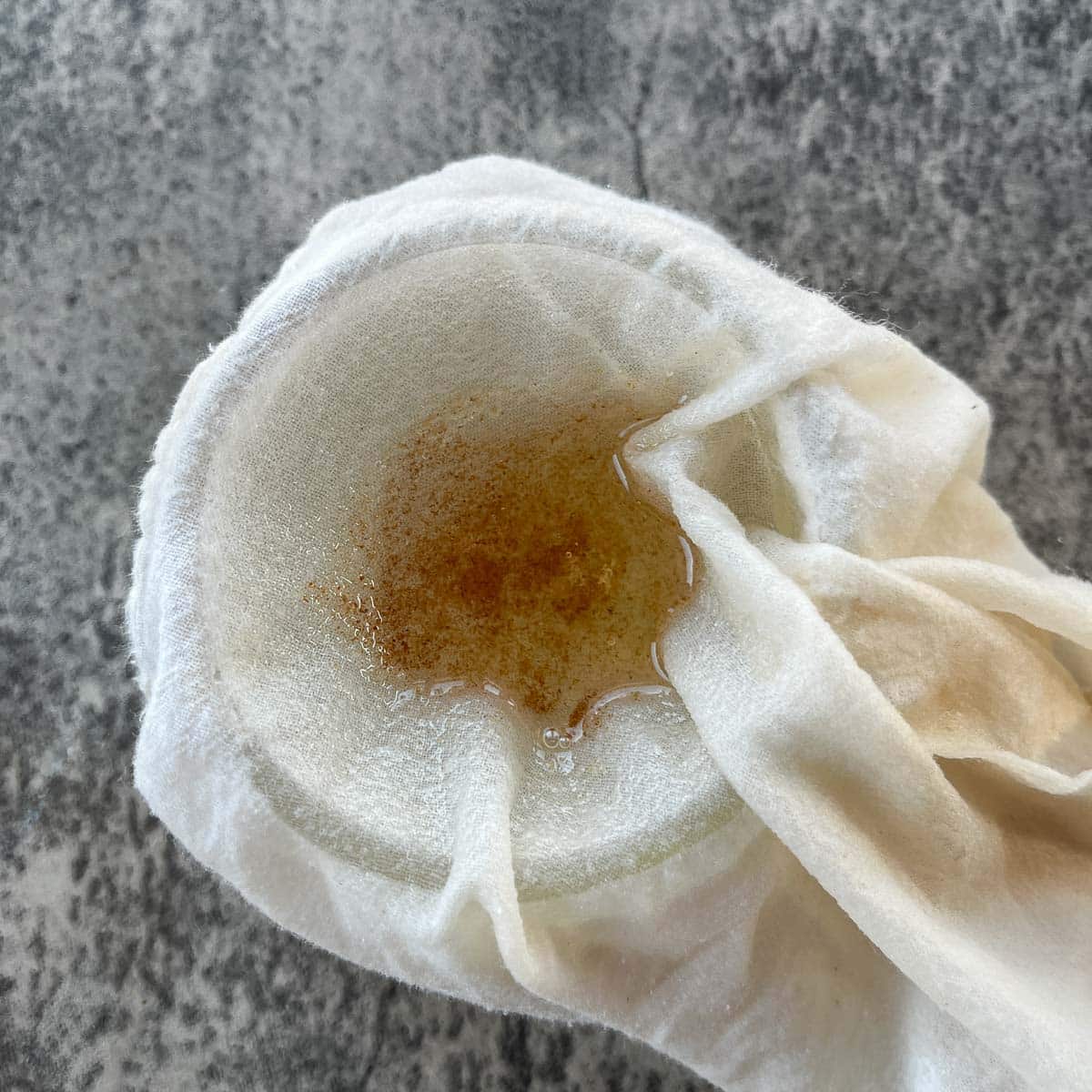
🫙 Storage Instructions
Bring lard to room temperature before capping the jar. Store in a cool dark location away from direct light. The pantry is usually a good option. For longer storage, store it in the fridge or the freezer.
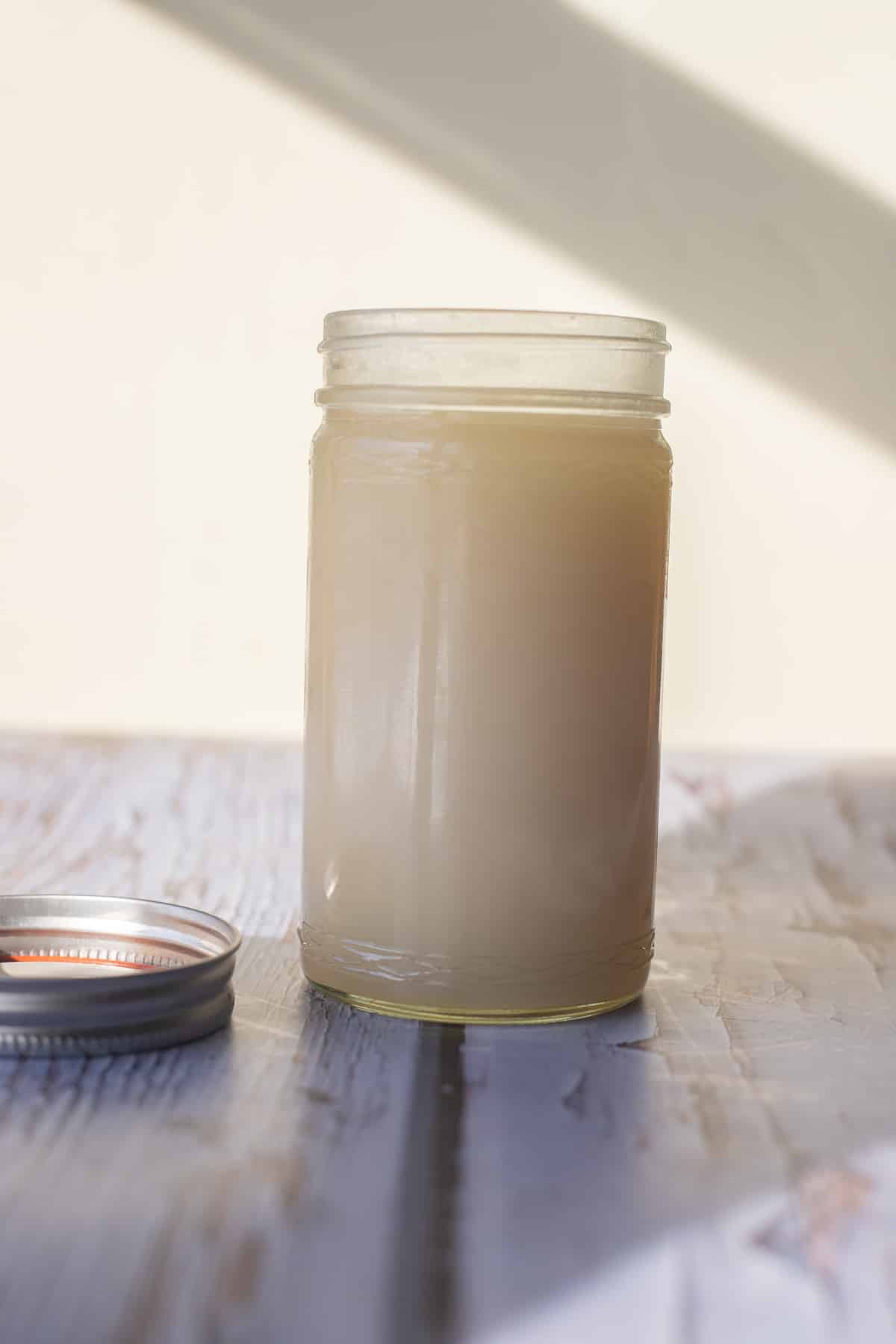
🕯Lard uses
So, what else can you do with your rendered pork fat? Besides using it in the kitchen to cook with, lard has many other uses too. It can be used to make candles, soaps, lotions, and salves!
Additionally, lard has a high smoke point which means it's excellent for frying. It can also be used to season your cast iron skillets.
🤷🏻♀️ FAQs
Lard can keep for quite some time when stored properly. It can last for up to a year when stored in a dark, cool location and even longer when refrigerated.
The fat around a pig's kidneys is called leaf lard and is considered the best for rendering pork fat. However, unless you own a butcher shop or have pigs to slaughter on your farm, most of us don't have access to leaf lard. For this reason, the excess fat from a pork butt or shoulder can be used instead.
Lard is just another name for rendered pork fat. Raw pork fat is cooked over low heat for a long period of time until it melts and turns to liquid. After the liquid cools, it solidifies, and voila, you have lard!
Yes, pork fat can be frozen to be rendered at a later date. However, frozen fat should be defrosted prior to rendering or the process will take even longer.
You may be wondering what the difference is between tallow and lard. The answer is quite simple. Tallow is rendered beef fat, while lard is rendered pork fat.
Rendered chicken or goose fat is called schmaltz and is a staple in Jewish cuisine. It has a very high smoking point of 375 degrees F, which is comparable to lard. Tallow, on the other hand, has a higher smoking point of 400 degrees F.
👩🏼🍳 Pro Tips
- If you don't have a fine mesh sieve, you can strain the lard through cheesecloth, paper towel, or a coffee filter.
- When rendering lard, remember to keep the flame as low as possible to avoid burning it.
- If you don't have pork fat readily available, you may be able to get some from your local butcher for free or a minimal charge.
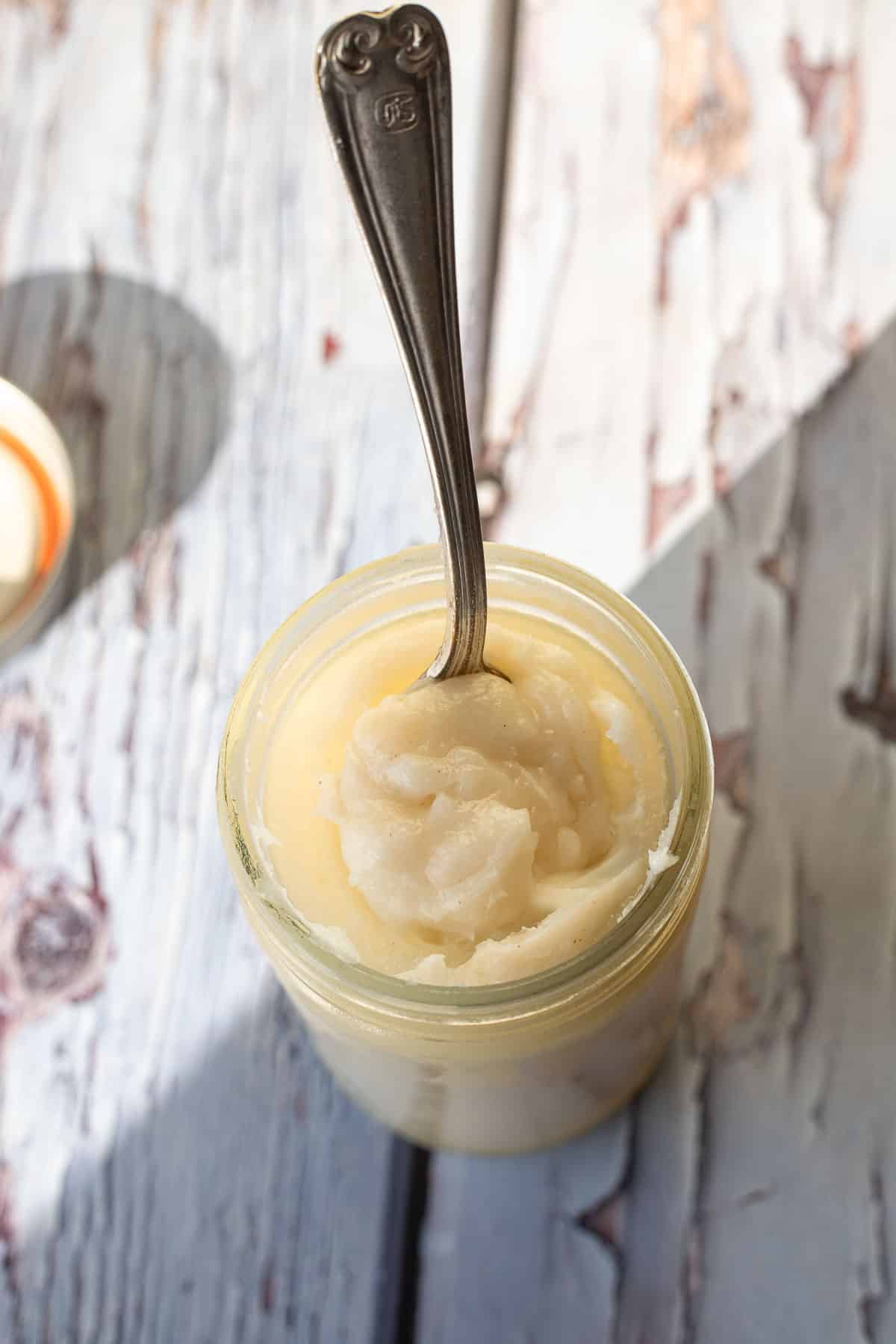
🥩 Related Recipes
Did you make this recipe?
📖 Recipe
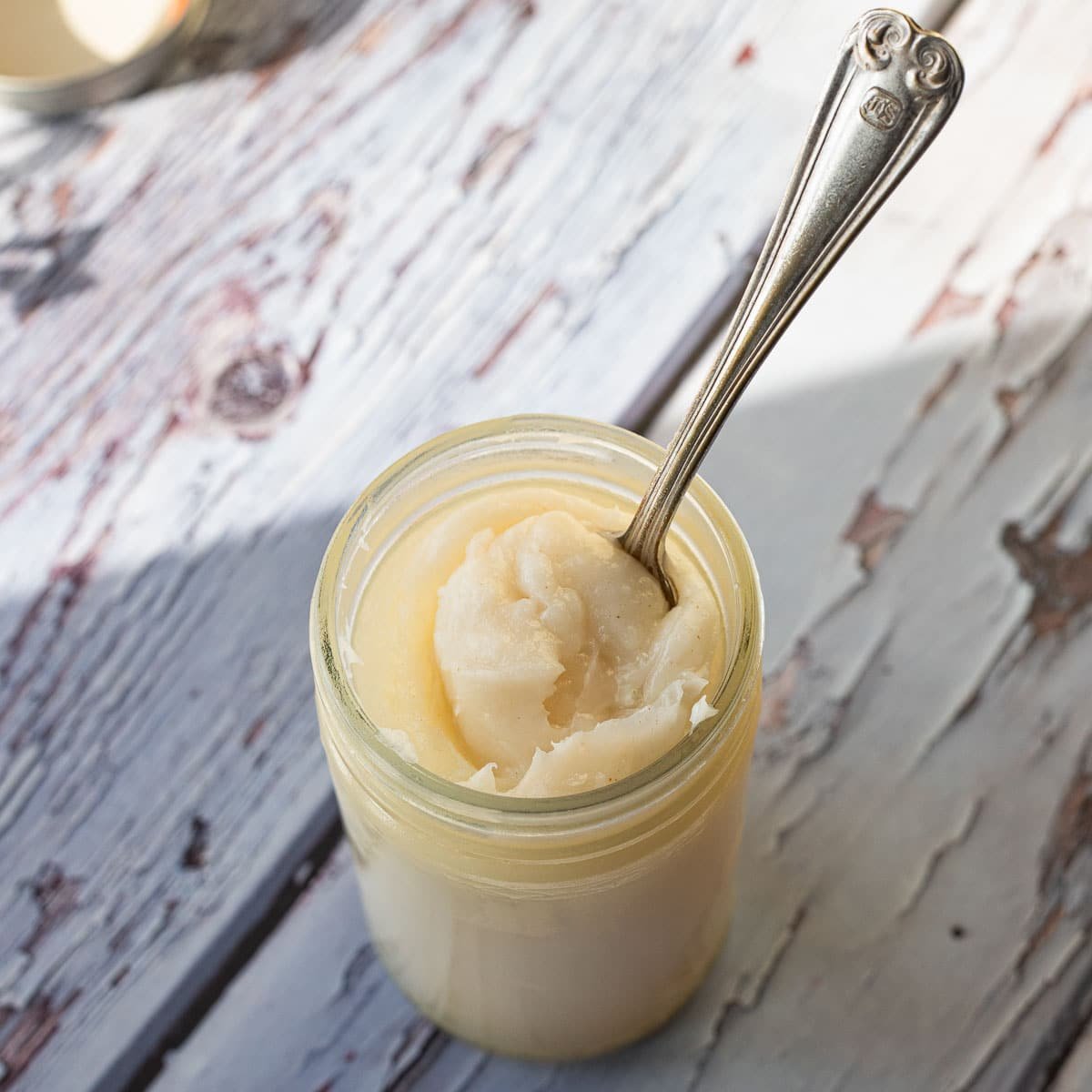
How To Render Pork Fat
Ingredients
Equipment
Method
- Partially defrost pork fat, if frozen, then remove meat or connective tissues, before chopping into 1" pieces. Add to a medium-sized pot.
- Place pot over a heat diffuser, if you have one, and cook on lowest heat setting for 1 to 3 hours, or until the fat is completely rendered and the fat pieces shrink and become crispy.
- Use a slotted spoon to remove the crispy fat pieces, then strain the fat through a fine mesh strainer and into a measuring cup or a mason jar. If you want the fat extra clear, strain it a second time through a soup bag.
- Bring lard to room temperature before capping the jar. Store in a cool dark location away from direct light. The pantry is usually a good option. For longer storage, store it in the fridge or the freezer.
Nutrition
Notes
-
- Keeping the fat semi-frozen will make the fat easier to slice.
- The lower the heat, the less likely you are to burn the fat and the cleaner and whiter the end result will be!
- If you don't have a fine mesh sieve, you can strain the lard through cheesecloth, paper towel, or a coffee filter.
- When rendering lard, remember to keep the flame as low as possible to avoid burning it.
- If you don't have pork fat readily available, you may be able to get some from your local butcher for free or a minimal charge.

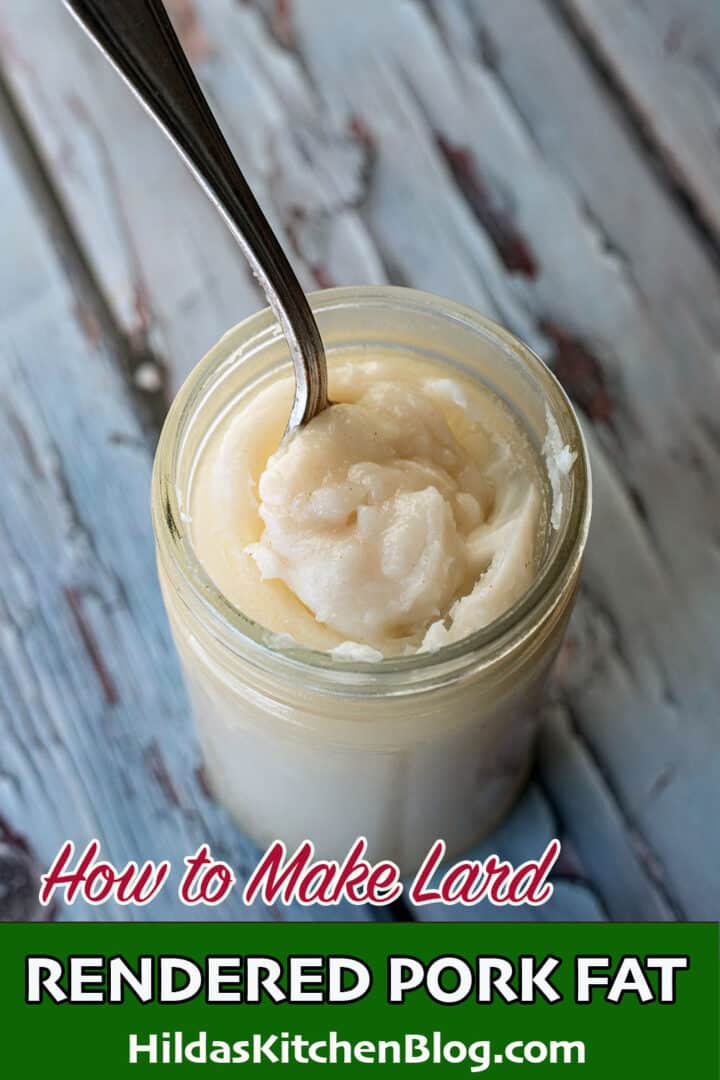
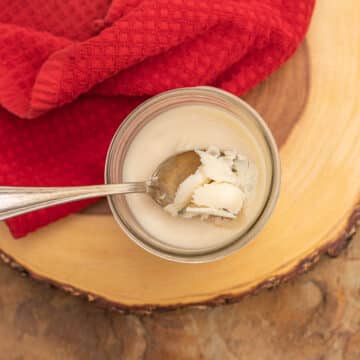
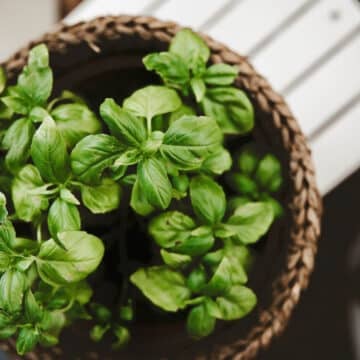
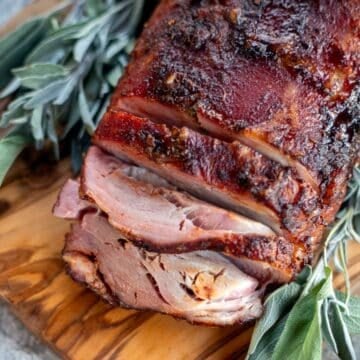
Comments
No Comments